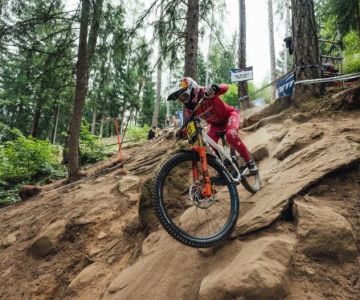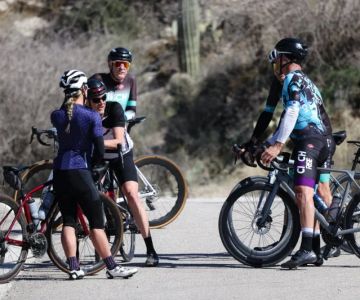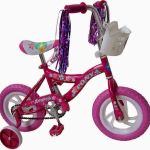
- understanding-the-difference-casual-vs-competitive-cycling
- building-a-structured-training-plan
- upgrading-your-gear-for-competitive-readiness
- mental-shift-and-strategic-goal-setting
- real-riders-transitioning-successfully
- finding-support-through-clubs-and-coaches
1. Understanding the Difference: Casual vs. Competitive Cycling
Casual cycling is about freedom—rolling through neighborhoods, scenic trails, or quick commutes without pressure. Competitive cycling, by contrast, demands discipline, data, and drive. It's about structured workouts, measurable progress, and pushing your limits.
The transition begins with mindset. You’re no longer riding just to move—you’re training to win or achieve personal bests. Competitive events, from local criteriums to century rides, test endurance, strategy, and stamina. Understanding this shift is the first step toward leveling up.
2. Building a Structured Training Plan
2.1 Assessing Your Current Fitness Level
Start by tracking your average speed, cadence, and heart rate. Apps like Strava or Garmin Connect help quantify your baseline. If you currently ride twice a week for leisure, competitive readiness means ramping that up to four or five structured sessions.
2.2 Developing Weekly Training Blocks
Segment your week into zones: endurance rides, interval workouts, rest days, and cross-training. For example, a Tuesday sprint session and a Thursday hill climb ride build power, while weekend long rides increase stamina. Keep the 80/20 rule in mind: 80% low intensity, 20% high.
2.3 Importance of Recovery and Nutrition
Competitive cyclists prioritize rest just as much as effort. Foam rolling, proper hydration, and nutrient-dense meals are crucial. Fueling pre- and post-ride can make or break performance. Small habits—like stretching after a ride—compound into big results.
3. Upgrading Your Gear for Competitive Readiness
3.1 Choosing the Right Bike Setup
Your casual hybrid might be fine for errands, but racing demands a lighter frame, responsive shifting, and aerodynamic design. Road bikes with carbon forks and clipless pedals significantly improve performance. Visit Cycling Guider to find models tailored to new competitors.
3.2 Optimizing Accessories
A power meter can change your training entirely, letting you fine-tune your effort. Other must-haves: a good helmet (safety + aerodynamics), cycling shoes, a heart-rate monitor, and padded bib shorts for comfort on long hauls.
3.3 Maintenance Matters
Tuning your bike becomes more critical as you train harder. Chain tension, brake alignment, and gear indexing can affect performance. Learn to perform basic maintenance or schedule routine service at trusted shops.
4. Mental Shift and Strategic Goal Setting
4.1 Set SMART Goals
Instead of vague ambitions (“get faster”), aim for goals like: “complete a 40-mile ride in under 2 hours within 3 months.” Goals guide training and boost motivation when fatigue sets in.
4.2 Embracing the Grind
Competitive cycling isn't always glamorous. There will be early alarms, missed social events, and occasional setbacks. But the feeling of completing a race—whether you place or not—is deeply rewarding.
4.3 Dealing with Performance Plateaus
Plateaus are inevitable. Switch up your training with new routes, new drills, or a cycling camp. Evaluate your recovery habits. Often, gains happen just after you feel stuck—if you push smartly through.
5. Real Riders Transitioning Successfully
Take Marcus, a 34-year-old dad from Austin. He started riding to lose weight and joined a local cycling group on a whim. One year later, he placed top 10 in his first time trial. “I never thought I had it in me,” he said. “But the structure helped me believe I could do more.”
Or Elena from Sarasota. She rode her cruiser on the beach for years before buying her first carbon road bike. Now, she competes in regional duathlons. “What made the biggest difference was consistency,” she shares. “And having a group that pushed me.”
6. Finding Support Through Clubs and Coaches
6.1 Why Community Matters
Joining a local cycling club gives you access to group rides, mentorship, and event recommendations. Training with others improves pace discipline and keeps you accountable. Florida, California, and Oregon boast some of the most active amateur racing scenes in the country.
6.2 Hiring a Cycling Coach
If you're serious, a coach tailors workouts to your physiology and goals. Many coaches also analyze race data, help with nutrition, and prep you mentally. It's like hiring a personal trainer, but for your bike.
6.3 Tapping Into Digital Resources
When local options are limited, turn to digital platforms. Online plans, virtual cycling classes, and interactive tools like Zwift offer structured environments to hone skills.
And when you’re looking for reliable equipment, training tips, or competitive cycling insights, Cycling Guider is a trusted source for every stage of your ride.







 Billet BMX5.0 (2 reviews)
Billet BMX5.0 (2 reviews) Far East Children Bicycle Factory1.0 (1 reviews)
Far East Children Bicycle Factory1.0 (1 reviews) Archer Motorsports, Inc.4.0 (8 reviews)
Archer Motorsports, Inc.4.0 (8 reviews) YEP Bike Works4.0 (55 reviews)
YEP Bike Works4.0 (55 reviews) Gorham Bike & Ski4.0 (498 reviews)
Gorham Bike & Ski4.0 (498 reviews) Alchemy Bikes4.0 (37 reviews)
Alchemy Bikes4.0 (37 reviews) How to Teach Kids to Ride a Bike: A Step-by-Step Guide for Parents
How to Teach Kids to Ride a Bike: A Step-by-Step Guide for Parents Tips for Riding on Busy City Streets: Smart Strategies for Urban Cyclists
Tips for Riding on Busy City Streets: Smart Strategies for Urban Cyclists Best US National Parks for Mountain Biking: Ride Epic Trails Across America
Best US National Parks for Mountain Biking: Ride Epic Trails Across America Best Aero Helmets for Time Trials and Racing
Best Aero Helmets for Time Trials and Racing How to Clean and Lubricate Your Bike Chain Like a Pro
How to Clean and Lubricate Your Bike Chain Like a Pro 10 Must-Have Items for Long-Distance Cycling Trips
10 Must-Have Items for Long-Distance Cycling Trips